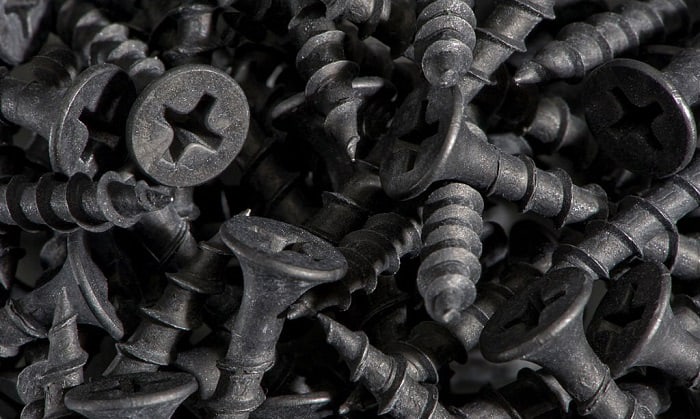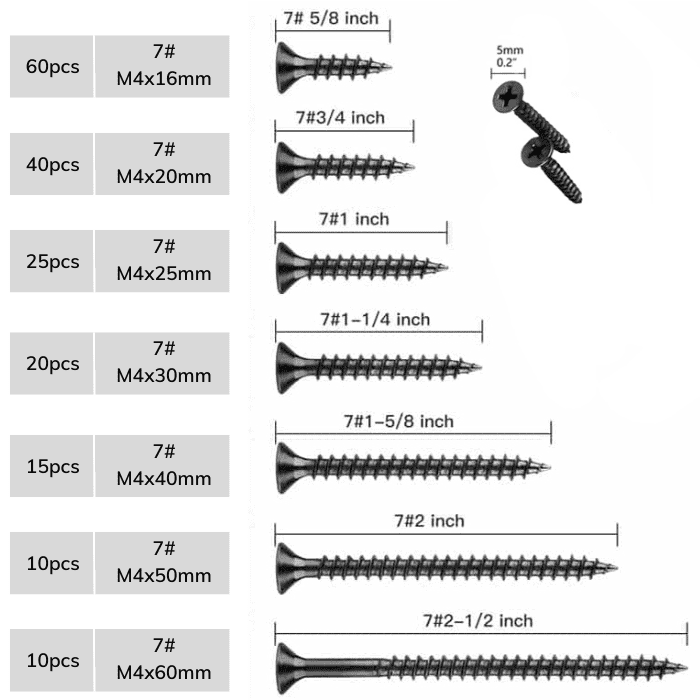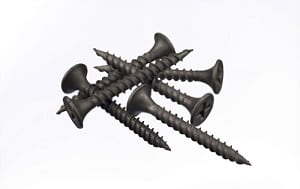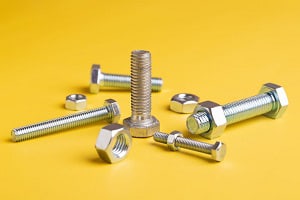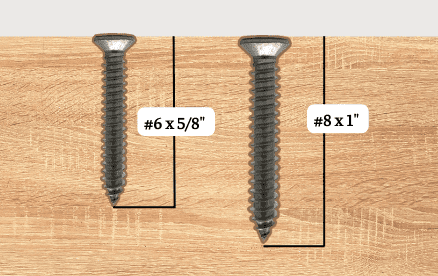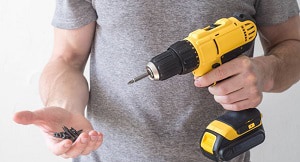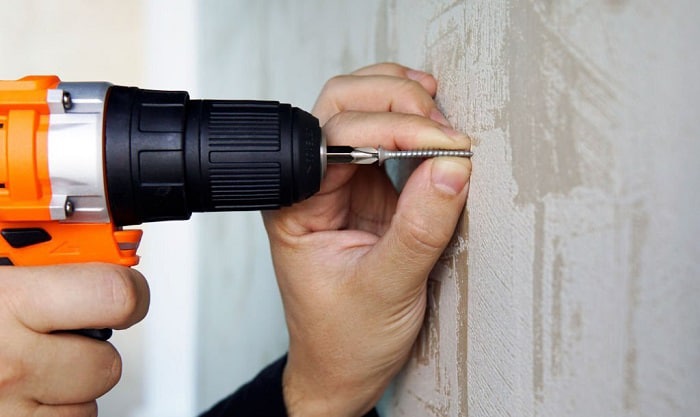Drywall screws are considered the industry standard for fastening full or partial drywall sheets to ceiling joists or wall studs. To perfectly do so, finding the right size of drywall screw is crucial.
At first glance, The drywall screws sizes and lengths, thread heads, types, composition, and points may appear incomprehensible.
In general, the ‘perfect screw size’ must be twice the size of the material it has to penetrate through. Anything less would also be workable, but the result may not be entirely reliable. So to help you choose the right size of drywall screw, let us discuss the drywall screw size chart.
Table of Contents
Drywall Screw Dimensions
1. Drywall Screw Length
You might ask, how long are drywall screws? Generally, the length of a drywall screw varies depending on where you are going to use it.
The standard drywall size is ½ inch thick. The thickness can be increased or decreased, but the change is immaterial.
For people doing the DIY installation in thicker drywalls, type-x or fire code drywall must be used. This type of drywall is thicker than usual, which is ⅝ thicker, and is used in walls near heater rooms and garages to prevent the fire from spreading.
In facing walls and ceilings, a 1 ¼ inch size is commonly used for thinner drywalls, and for thicker ones, a size of 1 ⅝ is recommended.
2. Drywall Screw Threads
Drywall screw threads are classified into two categories: fine and coarse, each of which addresses different purposes.
- Coarse Screw Threads
Coarse-thread drywall screws are best suited for installing most wood studs and drywall. The large threads effectively grip the wood and bring the drywall up towards the studs.
One disadvantage is that metal burrs can become trapped in your fingertips if you use coarse-thread screws. Gloves are recommended while working with coarse-thread drywall screws.
- Fine Screw Threads
For attaching drywall to metal studs, fine-thread drywall screws work best. Drywall screws with fine threads are ideal for attaching drywall to metal studs.
Coarse threads eat into the metal and never establish appropriate traction. Because fine threads are self-thread, they are ideal for application with metal.
Moreover, fine-thread drywall screws are less effective in wood than coarse-thread screws.
3. Drywall Screw Gauges
The drywall screw diameter is called gauge. In most circumstances, #6 or #8 drywall screws are used.
Take note that as the gauge number is increased, so does the diameter of the screw. So, a #6 drywall is thinner compared to a #8 drywall screw. While this may appear obvious, many hardware materials, especially the sizes, work oppositely.
For reference, the table below shows the actual drywall screw gauge sizes.
| Drywall Screw Gauges | |
| #6 | 0.1380 inches or 3.5052 mm |
| #8 | 0.1640 inches or 4.1656 mm |
#6 drywall is commonly used for almost all drywall installation. But in some specific circumstances, thicker drywall must be needed so you can go with the #8 drywall screws. Gauge is frequently stated as the second number the following length.
A drywall screw of #6 gauge for 5/8 length, for example, might be represented as “5/8 inch x 6.”
Uses of Drywall Screws
Drywall screws are primarily used to secure full sheets of drywall, typically 4 feet by 8 feet, for those who are into DIY installations or partial sheets of drywall to either metal or wood studs.
Drywall screws can be used to fix nail pops. If you have an antique home and see unexplained circular lumps on the walls, it is likely that it has nail pops.
Before the widespread usage of drywall screws, plasterboard was hammered into the area with wide-head and short nails.
Although drywall nails are still used as a rapid way to fix wallboard, drywall screws had already emerged as the traditional technique of fastening drywall to studs due to the nail-pop issue.
How to Drive Drywall Screws
Providing you with the size chart of drywall screws, you probably have an idea of what drywall you need. Now, the problem is, how can you drive the drywall screws properly?
If you are a casual drywall installer or a do-it-yourselfer, driving a drywall screw won’t require you to have a drywall screw gun. While a screw gun would be great, their functionality is so restricted for homes that they are unnecessary to acquire.
Here are the 5 easy steps on how you can drive drywall screws at home:
Step #1: Prepare an appropriate drill torque
Prepare a cordless drill torque with a clutch and adjustable speed. Having a drill torque with a clutch helps prevent tearing the screw head, also known as camming out.
Step #2: Pierce the Drywall Paper
Using the pointed tip of the screw, pierce the drywall paper. Turn on the drill and insert the drill bit into the screw.
Step #3: Insert the Drywall Screw
Allow the screw to pull itself into the studs and drywall. More force will be required around three-quarters of the way through. Otherwise, the head will emerge. In other terms, the drill driver would tear the screw’s head.
Step #4: Stop Once Flush
Stop when the drywall paper and head are already even.
Step #5: Let it Sink
Turn the screw another quarter or even half-turn to sink it underneath the paper without breaking it.
Which Drywall Screws Are Best for You?
Although there are many different types of drywall screws, most home DIYers use the same type.
When installing drywall on the walls of a family house, you’re most likely using standard 1/2-inch thick drywall panels.
For 1/2-inch thick boards, a 1 5/8-inch or 1 1/4-inch drywall screw is recommended. Look for a screw with a bugle and a cone-like coarse screw head.
Please keep in mind that these screws are suitable for wood wall studs instead of metal. When installing drywall on ceilings, use a little longer screw. Moreover, different types of drywall and their thicknesses may demand somewhat different drywall screws.
Frequently Asked Questions
What is the drywall screw spacing?
There is no uniform rule on the spacing of the drywall screws. The general rule, however, is that 32 screws should be used per drywall panel.
Additional factors can also impact spacing; for example, the use of drywall glue requires less number of screws necessary.
Screws should be 8 inches apart on the margins of a wall and must be spaced 16 inches apart throughout the rest of the wall.
What are the appropriate drywall size screws for ½ drywall?
For wood framing, the screw must be long enough to go at least ⅝ into the board. Whereas for metal framing, the screw must be at least ⅜ inch to be able to hold the drywall properly.
Conclusion
Choosing the proper drywall screws might be difficult at first. There are several alternatives to pick from, many of which change just slightly in length, gauge and thread.
However, with just a little knowledge – as we discussed in the drywall screw size chart – choosing the appropriate screws for your next DIY drywall installation is a piece of cake.

Hi, I am Roseanne Jones, an aspiring home designer that wants to make you feel more at home with your new house.With nearly five years of redecorating old residents and arranging new ones, I am confident that I can give you the best advice on your lovely place.


